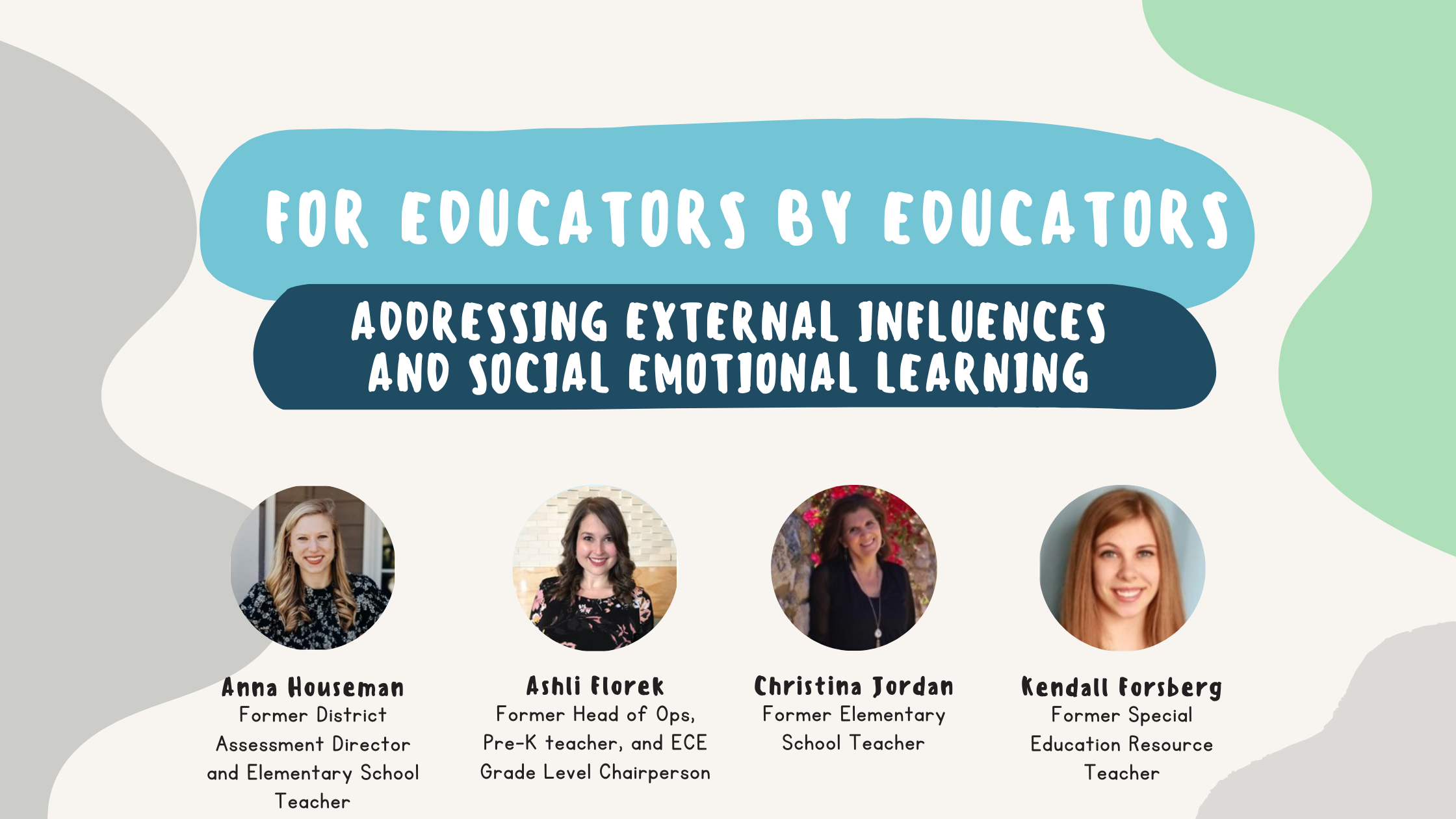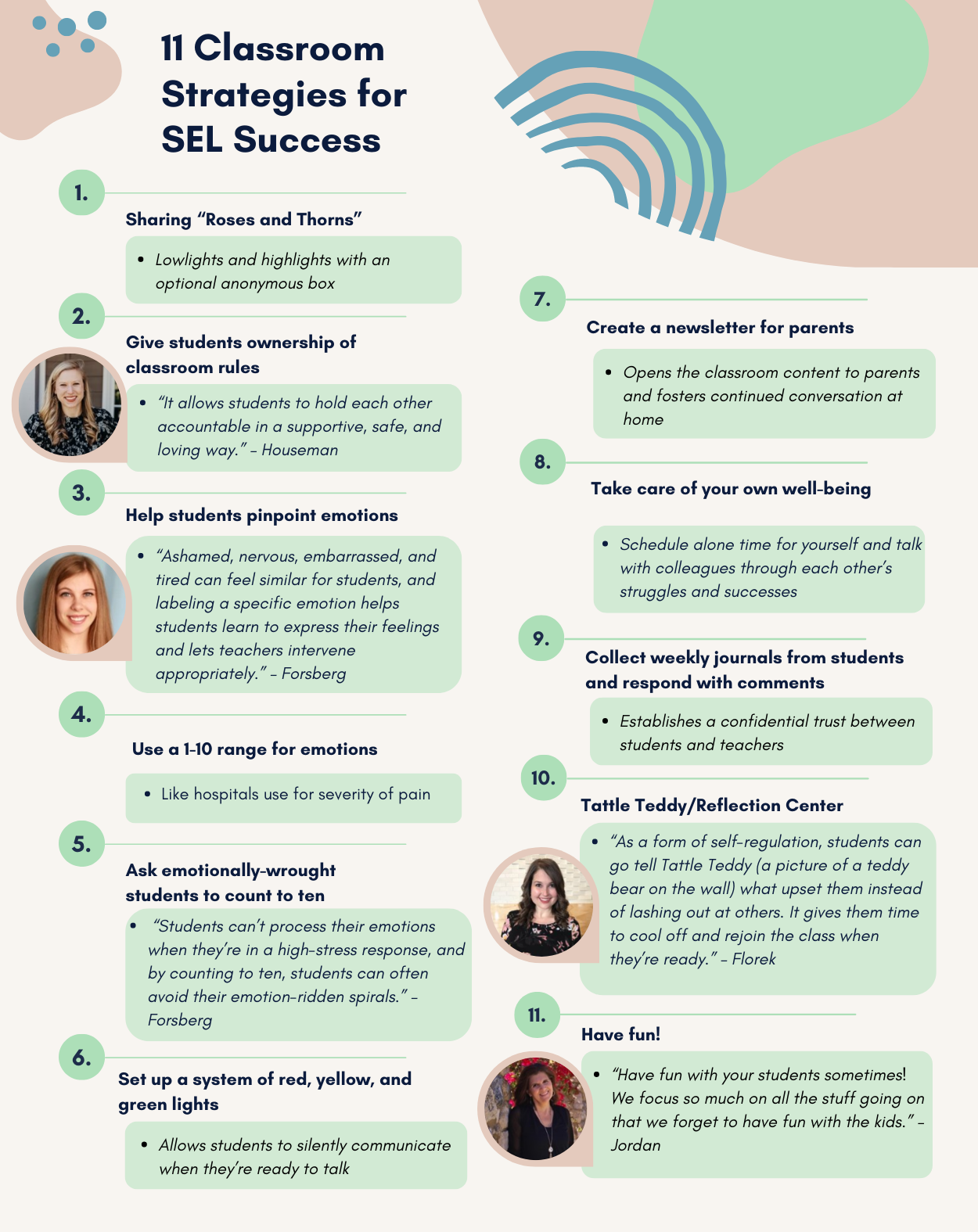
Addressing External Influences and Social-Emotional Learning
Students best absorb and retain academic instruction when they feel calm, safe, heard, and seen. The concept of prioritizing student well-being and social-emotional learning (SEL) ahead of academics became more mainstream in the past few years, but it remains a gray area.
To provide more color and shape to social-emotional learning, we pooled together the expertise of a few of our former educators here at Riverside Insights: Anna Houseman, Ashli Florek, Christina Jordan, and Kendall Forsberg.
Our roundtable agreed that it helps to think long term. As Forsberg says, “When I didn’t focus on SEL with my students, I found myself putting out a lot of fires and being reactive to their needs rather than fireproofing them and being proactive. Taking ten minutes a day to work on SEL is not going to cause learning loss, but not addressing SEL at all will.”
Jordan adds, “Part of our job as educators is to make sure we help students become contributing, functioning members of society, which includes getting along with others, having emotional awareness, having empathy for other people, accepting each other’s differences, and embracing each other’s strengths.”
Even if your school doesn’t have a formal SEL program or curriculum, Florek suggests asking yourself a few questions: “How does your classroom’s physical environment support an emotionally-safe space for all students? How do you promote supportive relationships in all classroom interactions and spotlight healthy behaviors and responsible decision-making with positive narration or other tactics? Think about how you want to reflect SEL in your classrooms and run with it.”
Bonus Practice: Focus on one schoolwide value per month
“We implemented a positive behavior intervention through an acronym of our mascot, a bear: belonging, empathy, academics, and responsibility. The school community focused on those values, and we’d highlight one per month.
“The school principal would stop students and teachers in the hall and ask, ‘This month we’re working on empathy. What does that mean? What does it look or sound like when you see someone showing empathy? Have you seen anyone in the building this week showing empathy, or have you shown empathy?’
“It really drove those values home to the students.” – Jordan
Stay tuned for future blogs as we recap our summer webinar series, For Educators, By Educators (FEBE), and highlight the best practices and tactical tips our educators have found successful. To continue the conversation, follow our LinkedIn group, "From Insights to Action: A Riverside Insights Network," to connect with the Riverside Insights educators featured in this blog.






